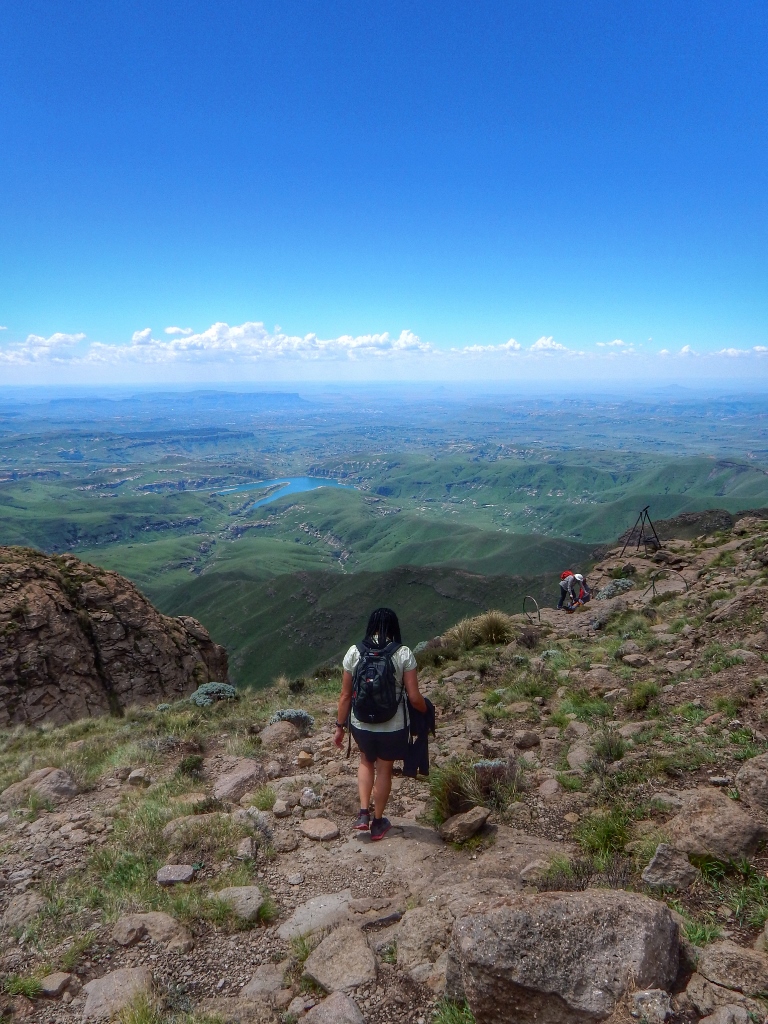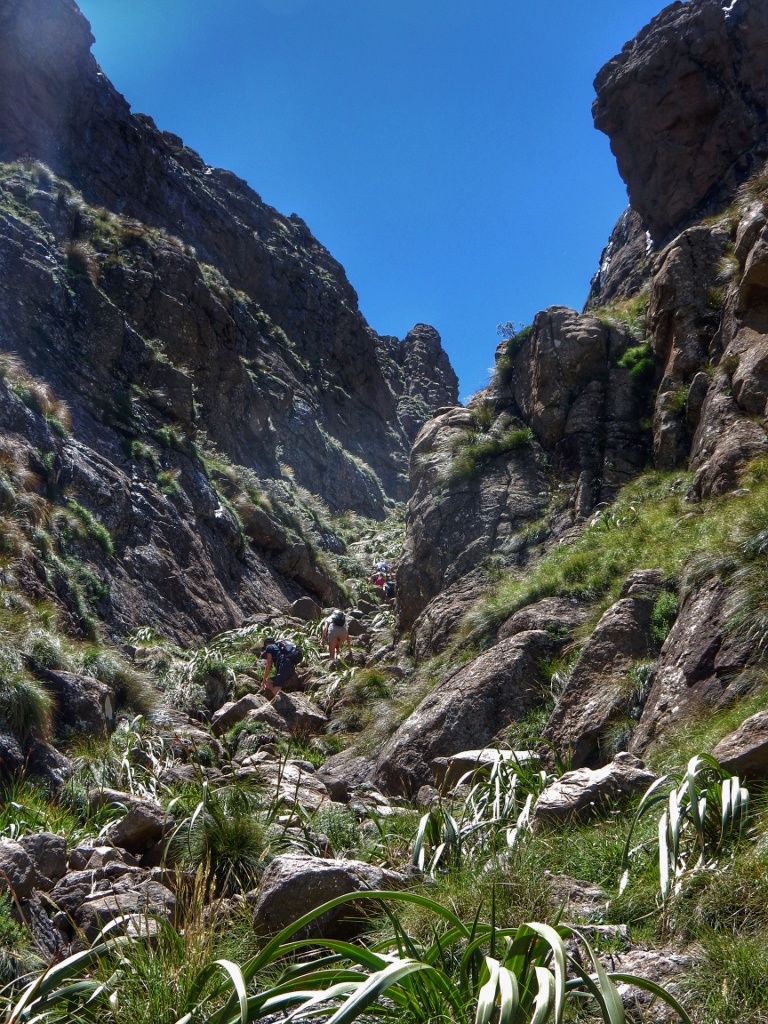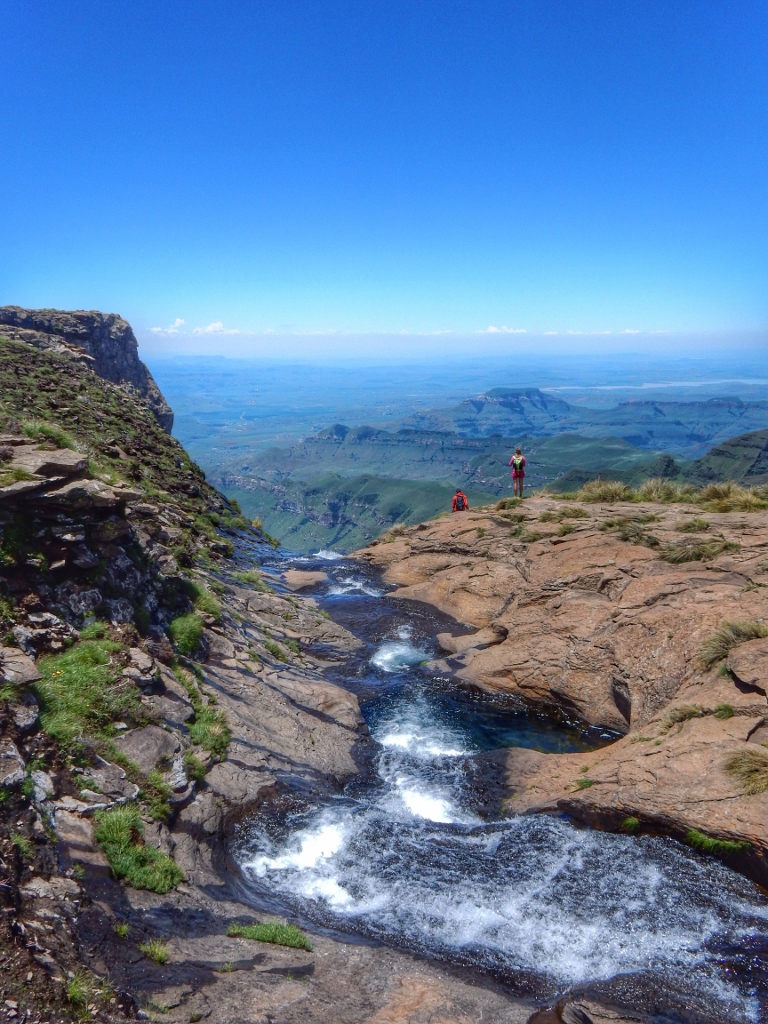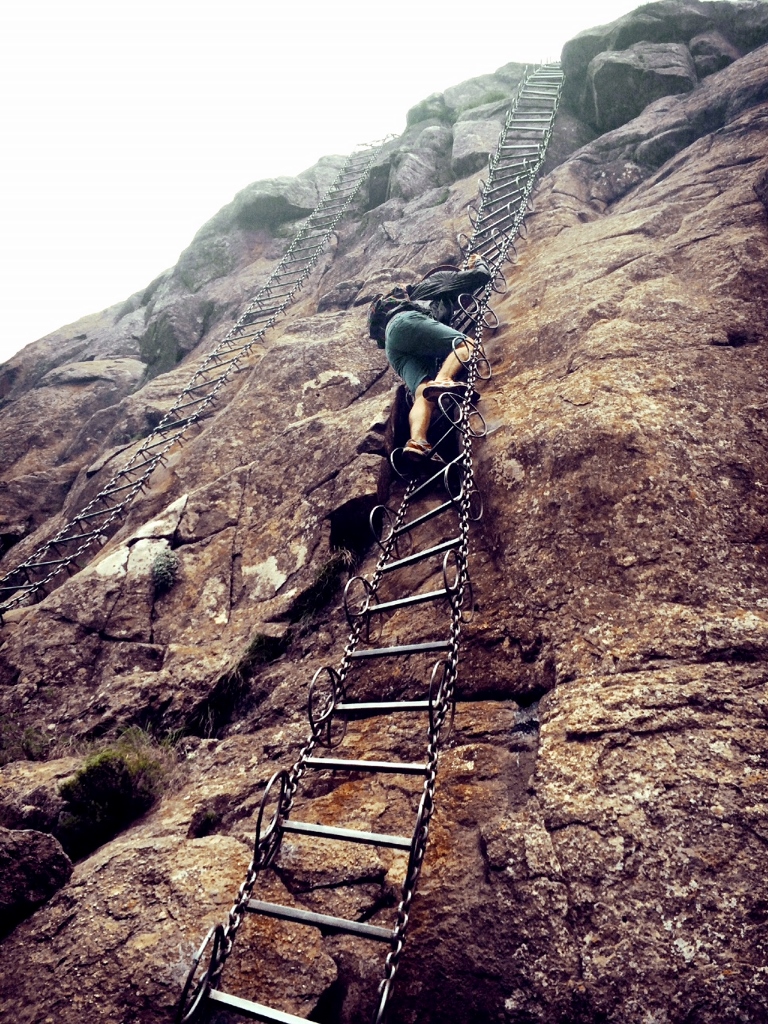
Every journey needs an adrenaline-fueled ‘Indiana Jones’ moment. On my recent visit to South Africa I found that magic moment hiking in the northern Drakensberg Mountains. Our day trip to The Amphitheatre/Tugela Falls was the hiking equivalent of the children’s board game Snakes and Ladders.
In the board game, you roll the dice and move around the board. When you land on a ladder you climb up. When you land on a snake you slither down. However, on our hike, we decided that when you land on a gully you scramble/climb up and when you land on a ladder you climb down. So naturally, the gully was nicknamed the Gully of Doom and the ladders the Chain Ladders of Death!
Dragon Mountain
The Drakensberg, which means Dragon Mountains in Afrikaans, is the premier hiking destination in South Africa. The Northern Drakensberg is regarded by many as the most dramatic section of all, with access to the highest country in South Africa, indigenous forest in the berg, one of the largest collections of rock art in the world, and the highest waterfall in Africa.
The Amphitheatre separates South Africa from Lesotho and it is here that the Tugela Falls has its source, rising at Mont Aux Sources and then plunging down the 1km basalt wall, into Royal Natal National Park.
The holy grails of trails
Such an adventurous hiking trail can only stay secret for so long and so it is no surprise that the Northern Drakensburg Traverse was recently listed as one of the holy grails of trails in National Geographic’s top 20 ‘world’s best hikes: epic hikes’.
A truly great trail winds into the essence of a place, so when assembling this list of the world’s great hikes we kept an eye on more than the footpath. We looked for walks that travel deeper into a location’s history and culture. Sure, there’s outdoor adventure on each of these 20 hikes, but the trails also tell a rich story.
The hiking options discussed in the article are a bit more serious than our day trip. The Amphitheatre Heritage Trail spans the Free State, Kwazulu Natal and Lesotho, and the most popular option is to do the 25-30km over 3 days.
Amphitheatre Backpackers
We stayed at the Amphitheatre Backpackers, which is only three hours from both Johannesburg and Durban. Here, from the grounds, you can see the entire Northern range from the Amphitheatre all the way to Cathkin Peak.
The top of the Amphitheatre is over 3000m high. It consists of an 8 km long escarpment wall flanked by two magnificent peaks – the Sentinel and Eastern Buttress. The weather can be treacherous. One moment the plateau is bathed in sunshine and the next, blanketed in thick fog. Paths are not clearly marked and the ladders are slippery when wet, so this hike requires a registered guide carrying first aid kit and safety ropes.
Daytripping
It usually takes 2-3 days roundtrip to access the summit of The Amphitheatre. The Amphitheatre Backpackers offers a condensed day trip to The Amphitheatre/Tugela Falls for R590. The hike itself is just a 5-6 hours roundtrip, including a lunch break.
We departed the Amphitheatre Backpackers at 0730, our expected drive time was two hours.
At 0945 we arrived at the Sentinel carpark at Witsieshoek via Phuthadjhaba (2500m). After filling in the mountain register, and making the obligatory toilet stop, we started the hike along a well maintained path which ascends gradually in the first hour towards the Witches and the Zig-Zags, taking you to the base of the Sentinel massif.

The path then generally levels out, and you swing right and follow the contour path below the Western buttresses with the land sloping steeply to the north and east providing wonderful views of the Malutis and the Witsieshoek Plateau.
From here there are two options: a strenuous climb up a dry, rocky gully, which will take you to the top of Beacon Buttress (3121m) or travel an additional kilometre along the path and ascend the famous chain ladders (the more popular choice but definitely not for those with a fear of heights).
The Gully of Doom
At 1130 we started climbing up the steep, rocky gully. It is filled with wildflowers and other indigenous flora (and most probably snakes). As you scramble and climb over large boulders it is difficult at times to make out a path, but it is there. There are smaller loose stones mixed with large boulders and care must be taken not to shower those behind you with loose rocks. The climb usually takes 45 minutes to an hour depending on your fitness levels.
The view from the bottom of the gully is all rocks and blue sky. The gully becomes steeper and broadens out to eventually exit onto a wide, flat plateau with uninterrupted views into Lesotho.

From here it is an easy, downhill walk to the Tugela Falls. As you get closer, the ground levels out and you can hear the melodious ringing of small bells, it is much later that you see the grazing sheep.
Tugela Falls is a complex of seasonal waterfalls. The five cascades are fed by the narrow Tugela River. Here on The Amphitheatre plateau it drops down 1000m into the Tugela Gorge.
This is our lunch stop. There is ample time for photos, a quick swim and lunch. Our arrival draws the attention of the local Basotho herdsmen. They approach the river, then sit, wrapped up in coloured blankets, and quietly watch us.

The Chain Ladders of Death
At 1330 we crossed the plateau to return via the chain ladders. Mercifully, our group had spread out on the walk across the Plateau to the ladders and our descent was comfortably staggered. There was no queue and hence no time to over analyze the situation at hand. And no time to consider the unthinkable: scrambling back down the Gully of Doom!
The white knuckle moment was getting onto the ladder, although unlike conventional ladders, the first section begins on top of the rocks and not against the rock face. These first few metres lull you into a false sense of security for once you climb over the edge there is just the chain ladder, you and a big vertical drop!
There are two sections of ladders. The first section is roughly 40m and the second 20m. There is a wide rock ledge between them. Each section consists of two exposed, metal chain ladders firmly bolted onto the rock face. There are two ladders; one without large, grab handles and one with. One also appeared to hang loosely over the escarpment while the other was permanently fixed.
It is best to maintain an easy, even pace of descent, although this is hard if there is a line of people descending before you. Standing stationary for any great length of time is not a comfortable experience.
The climb down is over remarkably quickly. Now there is time to reflect on the dangers. When the weather is fine the ladders are a test of nerves, but in inclement weather, high winds, rain and fog, these chain ladders must surely be a death trap.

The return to the Sentinel carpark was an anticlimax. The weather was starting to close in and the air was getting cooler. We retraced our steps back to the switchback paths from earlier in the day, moving much quicker on the downhill sections, arriving at the Sentinel carpark just after 4pm.
Adventure without risk is Disneyland - Douglas Coupland
By the time we arrived at the Amphitheatre Backpackers we were starting to think fondly of the Gully of Doom and the Chain Ladders of Death. After our first beer, we were certain that given half the chance, we would do it all again. Why even now, over two months later, I am certain it is one of the best hikes that I have ever done, and as for the Chain Ladders of Death, well the hike just wouldn’t be the same without them!